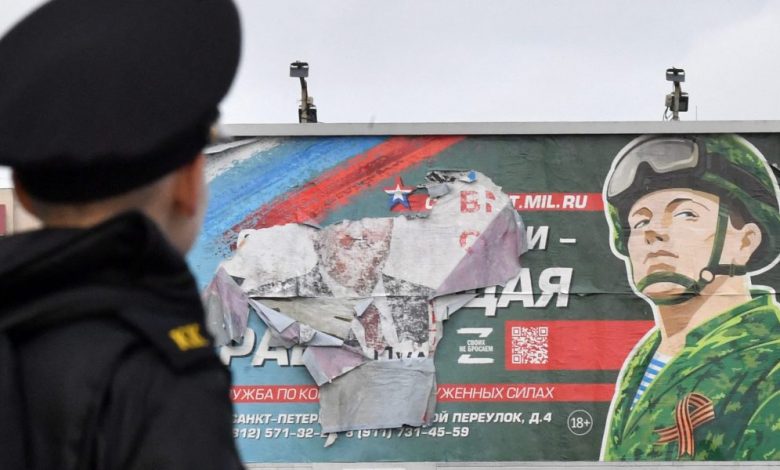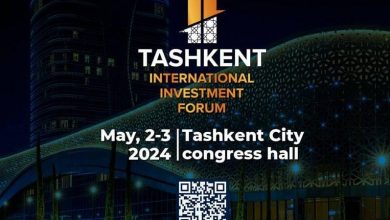How the Russian economy has been burning itself out in the year since Putin invaded Ukraine

A year after Putin’s invasion of Ukraine, some cynics complain that the unprecedented economic crackdown on Russia has not yet ended the Putin regime. What they are overlooking is the transformation that has been happening right before our eyes: Russia has become an economic by-product and a deflated world power.
Economic pressures, coupled with Putin’s own misfires, have eroded Russia’s economic might as brave Ukrainian fighters, HIMARS, Leopold tanks and PATRIOT missiles held Russian troops back on the battlefield. In the past year, the Russian economic machine has been disrupted, as our original research compendium shows. Here are Russia’s most notable economic defeats:
Russia’s permanent loss of over 1,000 global multinationals coupled with escalating economic sanctions
The 1,000+ global companies that voluntarily chose to leave Russia in the weeks following February 2022 in an unprecedented, historic mass exodus, as we have scrupulously recorded and updated to date, largely honored their commitments and either divested themselves outright or are in the process of completely seceding from Russia with no plans to return.
These voluntary business exits by companies with domestic revenues equivalent to 35% of Russia’s GDP and employing 12% of the country’s workers were coupled with the imposition of permanent international government sanctions unprecedented in scale and scope, including export controls on sensitive technologies, restrictions for Russian elites and asset confiscations, financial sanctions, immobilisation of assets of the Central Bank of Russia and removal of major Russian banks from SWIFT, with more sanctions planned.
Plunging energy revenues thanks to G7 oil price cap and Putin’s dotted natural gas gambit
The Russian economy has long been dominated by oil and gas, which accounts for over 50% of government revenue, over 50% of export earnings and nearly 20% of GDP each year.
In the first few months after the invasion, Putin’s energy revenues skyrocketed. According to economists at Deutsche Bank, Putin has lost $500 million a day in oil and gas export earnings compared to last year’s highs, marking a rapid downward spiral.
The precipitous decline was hastened by Putin’s own missteps. Putin stone-coldly withheld natural gas supplies from Europe – which previously received 86% of Russia’s gas sales – in hopes that freezing Europeans would get angry and replace their elected leaders. However, a warmer-than-usual winter and increased global LNG supplies mean that Putin has now permanently lost Russia’s importance as a key supplier to Europe, with dependence on Russian energy down to 7% – and soon to zero. With limited pipeline infrastructure to Asia, Putin is now making barely 20% of his previous gas earnings.
However, Russia’s energy collapse is also being triggered by skillful international diplomacy. The G7 oil price cap has struck the once unimaginable balance of allowing Russian oil to flow into global markets while eroding Putin’s profits. Russian oil exports have held amazingly steady at pre-war levels of ~7 million barrels per day, ensuring stability in the global oil market, but the value of Russian oil exports has fallen from $600 million per day to $200 million per day as the Urals benchmark plunged to ~$45 a barrel, just above Russia’s breakeven price of ~$42 a barrel.
Even countries on the fringes of the price cap system, like India and China, are riding on the lap of the G7 buyers’ cartel to secure Russian supplies with deep discounts of up to 30%.
talent and capital flight
Millions of Russians have fled the country since last February. The initial exodus of some 500,000 skilled workers in March was compounded by the exodus of at least 700,000 Russians, mostly working-age men, fleeing the possibility of conscription under Putin’s September partial mobilization order. Kazakhstan and Georgia alone each registered at least 200,000 newly fled Russians who desperately did not want to fight in Ukraine.
Also, the fleeing Russians are desperately stuffing their pockets with cash to escape Putin’s rule. Remittances to neighboring countries have increased more than tenfold and they have quickly attracted ex-Russian companies. For example, in Uzbekistan, Tashkent IT Park saw 223% annual revenue growth and 440% growth in total technology exports.
Meanwhile, offshore havens for wealthy Russians like the United Arab Emirates are booming, with one estimate saying 30% of Russia’s wealthy individuals have fled.
Russia will only become increasingly irrelevant as supply chains continue to adapt
Russia has historically been a leading supplier of raw materials to the world economy, with a leading market share in the energy, agriculture and metals complex. Putin is quick to make Russia irrelevant to the global economy, as it is always much easier for consumers to replace unreliable suppliers of raw materials than it is for suppliers to find new markets.
Supply chains are already adapting, developing alternative sourcing that is not subject to Putin’s whims. We have shown how, in several key metals and energy markets, the combined production of new utility developments slated to open in the next two years can fully and permanently replace Russian production within global supply chains.
Even Russia’s remaining trading partners appear to prefer short-term, opportunistic purchases of Russian commodities on the spot market to take advantage of depressed prices, rather than investing in long-term contracts or developing new Russian supplies.
It appears that Russia is on track to close in on its long-held worst fear: becoming a weak economic dependency on China – its source of cheap raw materials.
The Russian economy is supported by the Kremlin.
The Kremlin has had to prop up the economy with escalating policies, and Kremlin control is increasingly creeping into every corner of the economy, leaving less and less room for private sector innovation.
These measures have proven costly. Government spending grew 30% year over year. Russia’s 2022 federal budget has a deficit of 2.3% – unexpectedly beating all estimates despite initially high energy gains, deductions and transfers of 2.4 trillion rubles from Russia’s dwindling sovereign wealth fund in December and fire sales of 55 billion yuan in assets that same Month.
Even these measures of last resort were insufficient. Putin has been forced to raid the coffers of Russian companies in what he calls “revenue mobilization” as energy profits plummet, pulling a hefty RUB 1.25 trillion windfall tax from Gazprom’s corporate coffers, with more raids planned – and a massive issue of 3.1 trillion rubles forcing local debt in the fall washed down the throats of Russian citizens.
More can be done
While 2023 is set to exacerbate each of these trends and further take a toll on the Russian economy, more can be done to grease the skids.
A crackdown on sanctions evasion and smugglers, perhaps through secondary sanctions in the case of Turkey and other chronic offenders, will ensure bad actors don’t feed Putin’s war machine.
Sanctions provisions for technology, financial institutions and commodity exports can be escalated. The pressure on the companies remaining in Russia to leave the country completely and immediately must be maintained. Around $300 billion in frozen foreign exchange reserves could be confiscated and used to rebuild Ukraine
Tightening those screws will help improve the chances of Russia realizing it doesn’t need Putin by this time next year, just as the world has already realized it doesn’t need Russia.
Only then will the Russian economy and people stand a chance of returning to prosperity.
Jeffrey Sonnenfeld is the Lester Crown Professor of Management Practice and Senior Associate Dean at the Yale School of Management. Steven Tian is Director of Research at the Yale Chief Executive Leadership Institute.
The opinions expressed in Fortune.com comments are solely the views of their authors and do not necessarily reflect the opinions and beliefs of wealth.
More must-read comments posted by wealth:
Learn how to navigate and build trust in your organization with The Trust Factor, a weekly newsletter exploring what leaders need to succeed. Login here.



